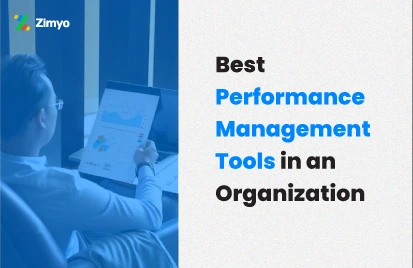Measure What Matters.
– John Doerr
OKRs or Objective and Key Results, are the paths for any organization to practice their focus toward common goals successfully. The idea behind OKRs is to align the individuals and teams toward a common objective or goal and preventing them from straying off the path.
Objectives and Key Results (OKRs) is a collaborative framework used by all categories of leaders, no matter big or small, to define their goals and measure the outcomes.
Objectives – conveys to the teams and individuals the larger and end goals of a company. These goals are aspirational and can be about growth, change or innovation.
Example –to increase customer engagement OR to develop a more sustainable business model.
Key Results – refer to the measurable goals needed to achieve the larger goal in the objective.
For instance, if the Objective is to increase customer engagement, the KRs could be to – solve 100 customer complaints in a day OR respond to 60 customer messages on social media on a daily basis.
In our blog, Benefits of OKRs for remote teams, we covered what OKR stands for and how it is particularly useful for goal setting for remote teams.
If your organization is new to setting up OKR’s for teams, it can be quite a daunting task for everyone. Furthermore, if the teams are set up remotely, following the hybrid pattern, it can get all the more challenging. However, if done right, it can be a successful initiative.
It’s All About the Details
Setting up OKRs for your remote teams can be done if you spend time figuring out exactly what you want to achieve by the end of a certain quarter. Drilling down to the minutest details and creating a very strong blueprint is the key. However, this blueprint needs to be tracked from time to time and changes will also be made as the journey progresses.
The best part about setting OKRs is they can work on corporate, departmental or individual levels. OKRs keep everyone on the same track, promotes collaboration and helps drive employee engagement throughout the organization. Let’s take a look at how you can use OKRs to not just set clear goals for your teams and team members, but also how you can measure those goals.
Step 1 – Introduce your remote team to the concept
Research finds a positive impact on performance when people commit to goals. Effective goal setting trains the mind to think about what is needed and work towards achieving it. Psychologists and mental health researchers associate goals with a higher predictability of success. The first step has to be managers ensuring that all remote team members understand how the OKR method works and how it will help them as a team and individual level.

Once you decide to use OKRs to set, track and measure goals of your remote teams, the first step is to introduce them to this goal management process. Showing your remote teams the bigger picture and the “why” of setting OKRs is very important to set the right foundation. Managers must be transparent about why OKRs are going to be introduced and how it can help the organisation perform better on an individual and team level.
As you grow a company, the single hardest thing to scale is communication. It’s remarkably difficult. OKRs are a great way to make sure everyone understands how you’re going to measure success and strategy.
~ Dick Costolo, ex-CEO, Twitter
Plan to introduce the idea of OKRs to your remote team during an all-hands meeting just a few weeks before a quarter starts. Lay down the vision clearly in front of your employees and allow them enough time to think, reflect and get back to you with questions and concerns, either right away or after some time.
Step 2 – Lay down the objectives
The O in OKR stands for the objective. The objective is the ultimate goal that the organisation wants to achieve. It can be highly aspirational, qualitative and inspirational, and mostly a vision that the company strives towards achieving. A company should have not more than five objectives per quarter. Too many objectives can lead employees to go astray.

Once everybody on your remote team has gained a complete understanding of the OKR methodology, it’s time to communicate the high level objectives that the company has set for itself. Knowing the vision the organisation sets for itself is seldom known to all employees. OKR gives a chance for everyone to have the same higher goal by letting every employee know of the large goals the organisation aspires to achieve. Knowing the objectives also helps teams align their own goals to the larger company goals.
The way you decide to lay down the objectives can either be a top down approach or a bottom up approach. In a top-down approach, the senior management defines the OKRs first and then asks managers to set OKRs for their remote teams. The remote teams then lay down their own goals in alignment to the pre-defined objectives. The other way is the bottom-up approach, where employees are asked to offer their suggestions on what the objectives should look like. Company wide OKRs are set after brainstorming sessions with everyone participating in the goal setting process.
Step 3 – Prioritize goals

Brainstorming with your remote employees is great and can also bring in a lot of ideas to the table. While it can be tempting to work on each idea, prioritizing the key results that align closest to the objectives is important. Too many objectives or key results can take up a lot of time for everyone and leave them overwhelmed. Identifying which goals need to be prioritized is once again a team effort.
For instance, 50 percent of objectives at Google come from the bottom up. This shows the employees that their opinion is valued and the organisation trusts their decision making ability. This can have a tremendous impact on the motivation levels of the employee, as they get to participate in the entire goal setting process.
Step 4 – Set key results for teams
Jeff Gothelf states that OKRs work best when set with teams, rather than with individuals. He states that while individual goals are great for personal growth, key results should be set up with a team approach when it comes to a workplace.
This is because a shared objective and quantifiable metrics set for the key results can help a team work towards common goals, coordinate with each other, help each other out and stay on track. The goals are shared, which do not make them immediate, but rather a means to an end. With team specific key results, success is measured not by what an individual does, but by the impact of the team as a whole.

Identify your teams and discuss how they can contribute to achieving the objective over a period of time through quantifiable key results. This helps managers focus on the work and value added by teams, rather than micromanaging individuals and tracking their work hours. For instance, if the objective is to become the number one ranking product on google, one of the key results of the marketing team could be to publish 4 content pieces a week that eventually shows up on google search.
Similarly, the customer success team can work with the marketing team to build this knowledge base that helps address the most common pain points of the customers. The key results for the teams need to be quantifiable, with a number attached to each, so that the progress can be tracked and changes be made if something is not working.
Convey to your remote teams that each member’s contribution counts and everyone has to work in tandem to achieve the larger goals. The idea should be to learn to innovate and focus on result-oriented action.
Step 5 – Set a time frame for goal accomplishment

Once the objectives and key results are established, they need to be subdivided into further tasks that break them down into smaller, more achievable targets. The time frame for each of these tasks needs to be set, with deadlines attached for every small goal. The usual practice is to set OKRs for every quarter, with small deliverables every week.
The time frame would depend on the kind of objectives and the perception of how many hours it would take to accomplish them. While most companies go with quarterly, your team might set weekly or monthly OKRs. The time should be enough to help employees achieve their goals and there should not be any unnecessary pressures created.
Step 6 – Set up regular check-ins
While setting the OKRs might take up a significant amount of time, following up on the course of the quarter is key to ensuring the tasks listed get executed. It is extremely crucial to track progress with regular check-ins with the teams to find out how the journey is progressing. The team at Buffer acknowledges how OKRs can also change during a quarter depending on how things pan out with time. This dynamism of OKRs needs to be accounted for and everyone must be in the loop if the direction of a few goals changes in the course of time.

Challenges are bound to arise in the course of achieving the goals and teams need to catch up regularly to work through the setbacks. While check-ins are important, it is crucial to strike a balance by not meeting your remote team every other day and actually barring the achievement of goals by taking up too much time. The goal should be to set up regular meetings to keep everyone aligned, and not use it as a way to micromanage employees. Set up weekly calls with the remote team and discuss progress on each key result, identify what’s working and what needs modification and trust your employees to reach their goals.
Step 7 – Track and review progress

The reason why key results NEED TO be assigned a number to is so that their progress can be tracked. While progress needs to be tracked at regular intervals, objectives also need to be reviewed at the end of the quarter. Some questions to ask can be:
Did these create value?
Were these ambitious enough?
What can be improved next time?
Needless to say, involve your remote team when you do this exercise. Let everyone share their learnings, celebrate the successes and present their point of views on how things can be improved. The whole point is to do great work while feeling belonged to one unified culture set by the company.
The Wrap Up
Setting up OKRs for remote teams and implementing them can be challenging. However, if executed correctly and systematically, it can create wondrous results not just for the business, but also for the employees. Consider investing in an OKR software to help you track the progress.
Set up your own process, involve your team members actively and make them feel psychologically safe to contribute and voice their opinions. The key should be to not rush the implementation process and treat it just like another list of tasks to be ticked off. Instead, take your time through each stage of your OKR journey, learn from it as you go and keep growing along with it. It is a marathon and not a sprint, and definitely not a quick fix for a difficult quarter. It needs some time to perfect and every organisation’s journey would be different. Take your time and see where it leads your business to.




